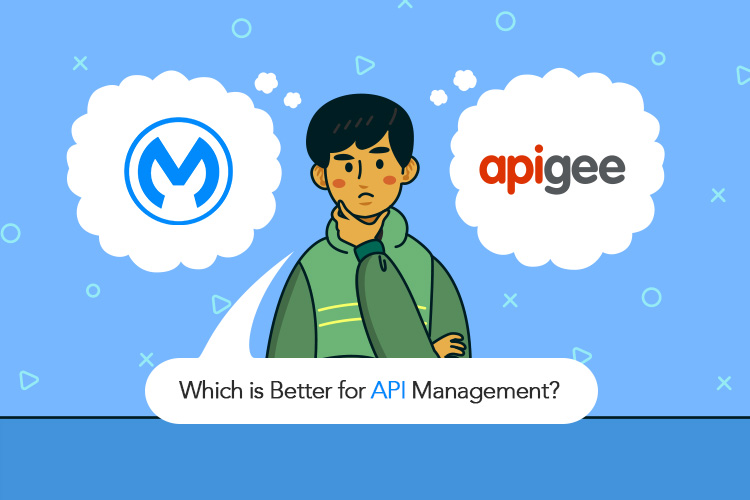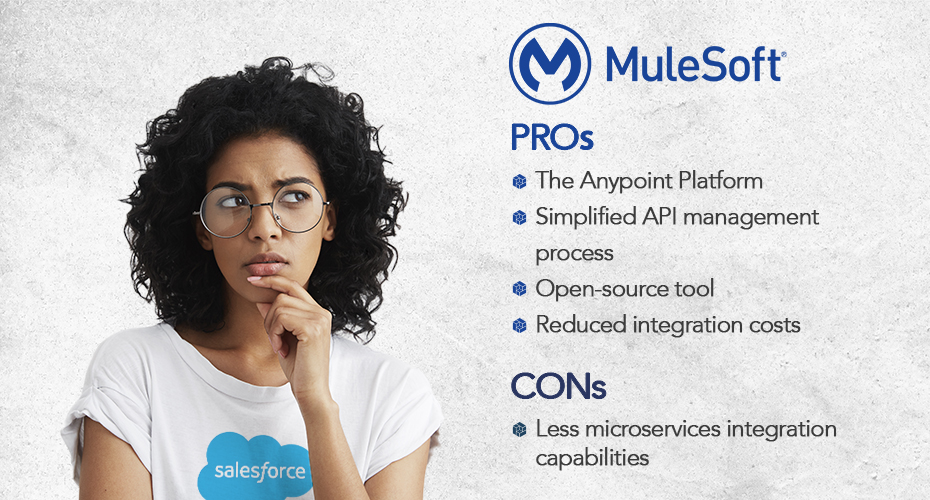
5 min
In the past, Application Programming Interfaces (APIs) were not given as much emphasis as they were seen as something that is used only internally. However, in the modern marketplace, companies make their APIs available to other businesses to help provide the customer with more detailed information.
Today, businesses looking to create and manage their APIs have many APIs to choose from. The two main competitors for the top spot are Apigee vs. Mulesoft. Since APIs are becoming the preferred integration method, we thought it would be interesting to compare and contrast these two API management platforms.
APIs are the driving force behind many services offered by businesses and allow companies to tap into a pool of skill sets that they might not have in-house. It all boils down to that APIs allow two applications to “communicate” and exchange data.
For example, when you open up Google Maps, in addition to the suggested route, you will also see the fare Uber will charge if you decide to use their services. This is just one of the benefits API integration offers both companies and their customers. We assembled a list of other benefits businesses can take advantage of using API connectivity.

Expedite Transition to the Cloud through API connectivity
If you have a legacy system slowing down your innovation speed, moving it to the cloud could be the solution you are looking for. However, how do you do this without disrupting essential business processes?
One of the exciting ways is through API connectivity. You can transition from on-premise to cloud infrastructure and then use that very same infrastructure to increase the pace of innovation. This can be especially useful if you are currently using point-to-point integration, which is much slower.
Expand to New Markets
Many companies take advantage of API usage to unlock their data and infrastructure to accommodate the necessary systems. Companies worldwide will be able to integrate with your product. You will provide your customers with more personalized and delightful experiences. You will deliver the right services at the right time with API solutions and leverage new channels to extend their brands.
Create a Scalable Infrastructure
A lot of big brands, like Spotify, are experiencing record growth. Using API solutions is one of the key reasons they can accommodate such growing demand. Without APIs, they would have siloed systems and do much redundant work. Instead, reusable APIs combined with microservices allow for increased development and integration of the systems they already have, such as data warehouses and enterprise resource planning software.
Give Your Sales Reps a Boost
Whenever your company gets an inquiry from a potential customer, how fast can your sales reps respond to it? The more time-consuming the response process, the more likely the prospect will decide to go elsewhere. With this in mind, the faster the sales reps can get a hold of the information about the potential customer, the higher the chances of conversion become. Giving your sales reps access control to real-time data can provide them with a boost. They will be able to contact the customer at the right time and have all the information they need to make the sale. This can be especially useful if you have any data in your CRM and connect it to a cloud service like AWS RDS for analysis.
Provide Better Experiences for Your Customers
When people visit a store or their website, they expect the items they offer to be in stock. However, a customer will often make an order and later receive a notice that the item is unavailable. Such a problem occurs when you have disparate systems and siloed data. You can use APIs to connect those systems and launch various omnichannel initiatives.

The Backstory
Mulesoft and Apigee are both established names in the IT world, but they are both owned by parent companies. Apigee was acquired in 2016 by Google, and Salesforce acquired Mulesoft in a blockbuster deal for $6.5 billion in 2018. Both Google and Salesforce have reasons for buying an API management service. This was a good acquisition for Google because it allowed them to enter the API market. Thanks to Apigee, they don’t have to include any of its capabilities in the cloud.
Mulesoft API Management
These products have dedicated services just for creating APIs and for the entire API lifecycle management. Mulesoft has the Anypoint Platform, an integrated development environment, but they also offer the API Manager, an API management solution, which is just for creating APIs and can be used by itself. Since Mulesoft’s primary focus is helping companies increase the tempo of their digital transformations, its integration platform includes pre-built connectors for systems such as SAP, AWS, and of course, Salesforce.
Apigee API Management
The Apigee Edge is a single API management platform offered by Google. It allows for all of the functions that the Anypoint Platform also provides. Still, it includes an extra functionality for microservices management. Apigee is available for both on-premise and cloud use. Still, developers will have to know Swagger to use it.
The most significant benefit of Apigee is its usability. It is straightforward to use and has a visual interface. It allows for branding and supports JMS and SMTP functionality. It will also be easy to integrate Apigee with other platforms and provide constant updates and troubleshooting options. You will even use machine learning to obtain actionable insights to provide helpful information on scaling your needs.
The key downside of Apigee is its price. While they offer many service plans, one will cost you $500 a month, giving you 15 million application programming interface (API) calls monthly. Comparing this with Mulesoft, it comes in two editions: Community and Enterprise. Mulesoft itself is an open-source tool. The Community edition will provide you with the functionality to create APIs. We recommend migrating to the enterprise version if you are looking for more advanced features.

The main benefit of the Mulesoft API management is the Anypoint Platform. You will use it to quickly create new APIs and simplify the whole API management process. This will make all data readily available for mobile devices, web apps, and other connected devices. You can also use the Anypoint Platform to connect your legacy system with any SaaS software you use while reducing integration costs.
The downside of Mulesoft is that it is not quite up to date regarding microservice management. They tried to fix this issue with the latest release in October of last year with Anypoint Service Mesh. However, still, Apigee is better in this regard.


